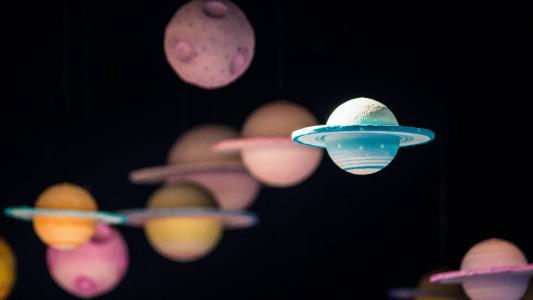Amateur astronomer discovers new moon of Jupiter
An amateur astronomer has spotted a previously unknown moon of Jupiter, the first discovery of a new planetary moon by a non-professional.
Jupiter’s moons: A moon is any natural object that orbits another celestial body. The eight planets in our solar system have more than 200 moons between them, and astronomers have even spotted moons orbiting asteroids.
Jupiter is particularly well-suited for wrangling moons. As the biggest of the planets, it has a lot of space around it to support them, and its strong gravitational field can readily pull nearby objects into its orbit.
Because many of these moons likely formed soon after Jupiter, scientists can learn more about our early solar system by studying the satellites.
Unexplored space: As of 2018, scientists had identified 79 moons around Jupiter — but astronomers predict it might actually have more than 600.
The problem with pinning down an exact number is that a moon can only be confirmed once scientists can prove it’s caught in a planet’s orbit.
Jupiter may have hundreds of moons waiting to be discovered.
To do that, they need to be able to show the prospective moon is following a stable path around the planet, which means tracking it across images of different locations recorded at different points in time.
Telescopes can only record images of Jupiter’s moons for about one month out of the year, when the planet is closest to Earth. The limited images can make it difficult to predict and confirm a potential moon’s orbit.
New moon of Jupiter: The discovery of this new moon of Jupiter started with amateur astronomer Kai Ly looking through publicly available images during their summer break from school.
The images were recorded by the Canada-France-Hawaii Telescope on a single night in February 2003, and Ly was able to identify three possible moons in them. They then spotted one of the objects, now dubbed “EJc0061,” in images from the following three nights.
Ly used images from earlier in the month to track EJc0061 making a 22-day-long arc across Jupiter’s sky — that suggested that the object was trapped in the planet’s orbit. They then used images from the next 15 years to confirm their discovery of the new moon of Jupiter.
“I’m proud to say that this is the first planetary moon discovered by an amateur astronomer!” Ly reported.
We’d love to hear from you! If you have a comment about this article or if you have a tip for a future Freethink story, please email us at tips@freethink.com.
